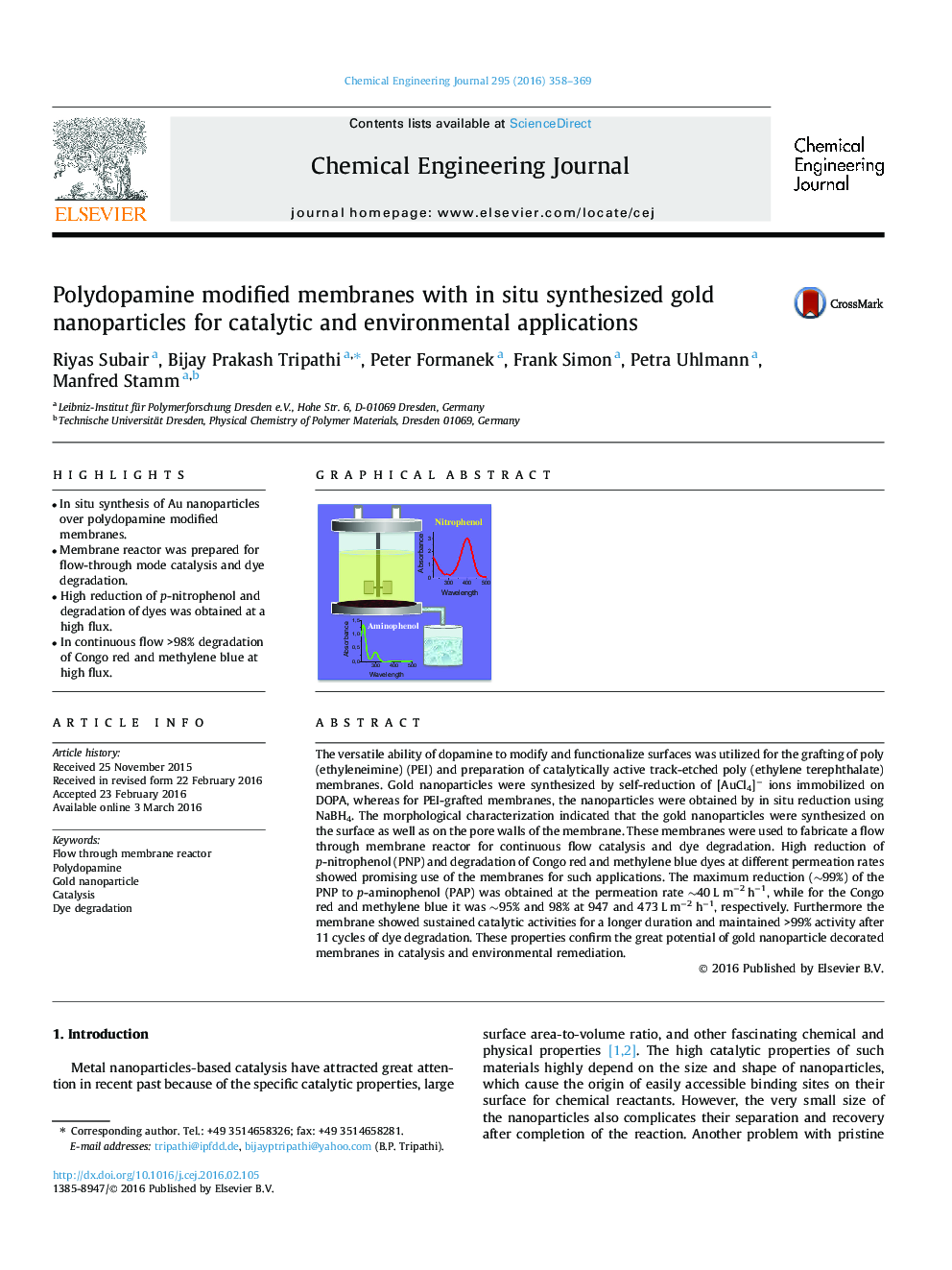| Article ID | Journal | Published Year | Pages | File Type |
|---|---|---|---|---|
| 145617 | Chemical Engineering Journal | 2016 | 12 Pages |
•In situ synthesis of Au nanoparticles over polydopamine modified membranes.•Membrane reactor was prepared for flow-through mode catalysis and dye degradation.•High reduction of p-nitrophenol and degradation of dyes was obtained at a high flux.•In continuous flow >98% degradation of Congo red and methylene blue at high flux.
The versatile ability of dopamine to modify and functionalize surfaces was utilized for the grafting of poly (ethyleneimine) (PEI) and preparation of catalytically active track-etched poly (ethylene terephthalate) membranes. Gold nanoparticles were synthesized by self-reduction of [AuCl4]− ions immobilized on DOPA, whereas for PEI-grafted membranes, the nanoparticles were obtained by in situ reduction using NaBH4. The morphological characterization indicated that the gold nanoparticles were synthesized on the surface as well as on the pore walls of the membrane. These membranes were used to fabricate a flow through membrane reactor for continuous flow catalysis and dye degradation. High reduction of p-nitrophenol (PNP) and degradation of Congo red and methylene blue dyes at different permeation rates showed promising use of the membranes for such applications. The maximum reduction (∼99%) of the PNP to p-aminophenol (PAP) was obtained at the permeation rate ∼40 L m−2 h−1, while for the Congo red and methylene blue it was ∼95% and 98% at 947 and 473 L m−2 h−1, respectively. Furthermore the membrane showed sustained catalytic activities for a longer duration and maintained >99% activity after 11 cycles of dye degradation. These properties confirm the great potential of gold nanoparticle decorated membranes in catalysis and environmental remediation.
Graphical abstractFigure optionsDownload full-size imageDownload as PowerPoint slide
